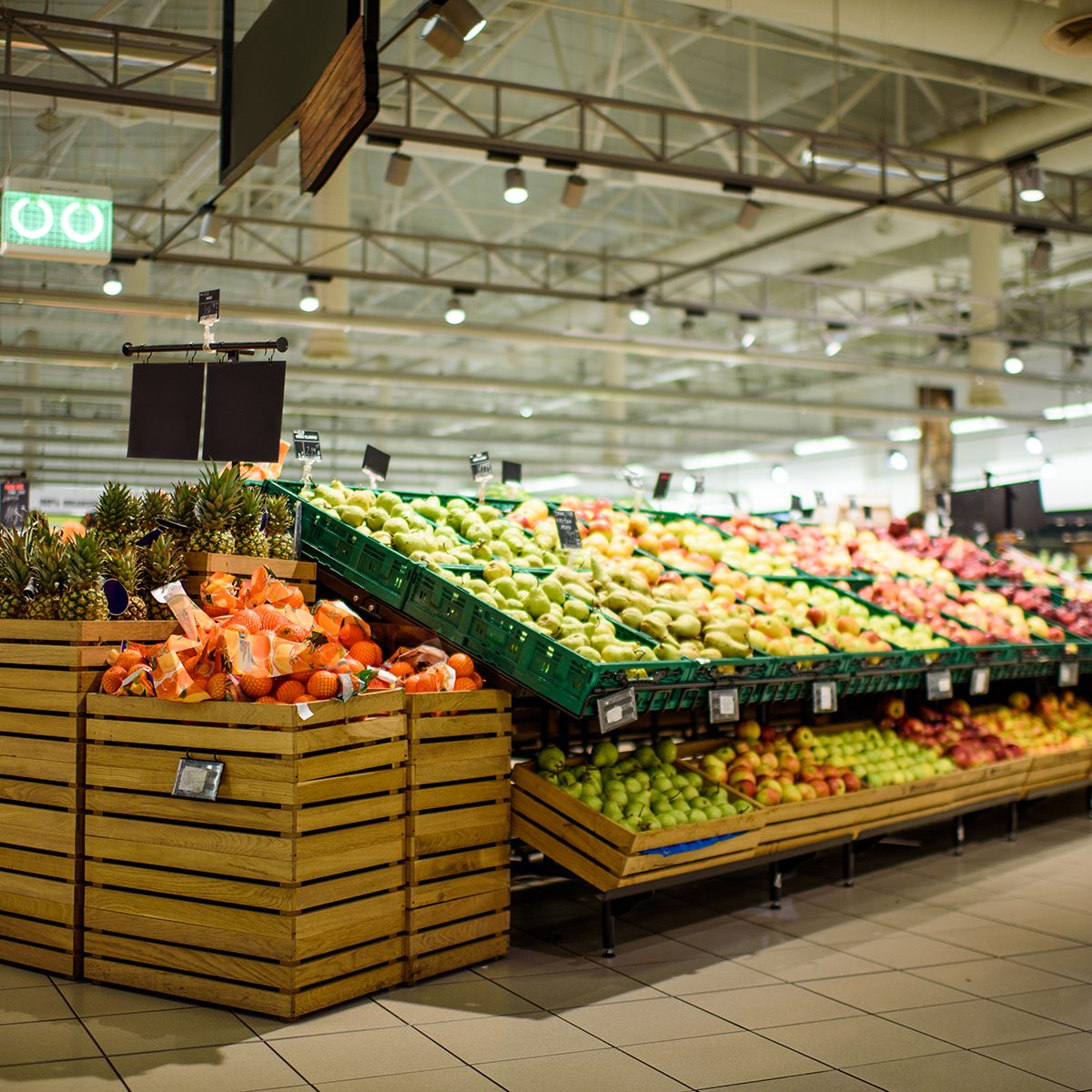
Grab from the Back
Most produce clerks will rotate older produce to the front. This encourages shoppers to buy up greens before they start to wilt or go mushy. If you want the freshest fruits and veg, reach toward the back. Grabbing from the back of the display also ensures you get items that have been touched the least by other shoppers’ germy hands. And make sure to clean your produce when you get home.

Shop in the Middle of the Week
To avoid the crowds, and get the freshest produce, it’s best to shop in the middle of the week. Most stores have fresh food delivered on Tuesdays, so on Wednesday you’ll be shopping for that batch of fruits and vegetables.

Use a Produce Bag
The grocery store carts, cart handles and checkout conveyor belts are all covered in bacteria. Keep your fruits and vegetables as clean as possible by using a plastic produce bag (or bring your own reusable tote). Of course, always wash your produce thoroughly before consuming.

Pay Attention to Recalls
You’ll most likely hear about a national food recall and grocery stores are quick to take items off shelves. But for real-time notifications from the USDA and FDA, check this food safety app. If you purchased a recalled fruit or vegetable, throw it out and sanitize anything in your kitchen that it came into contact with, like utensils, cutting boards and countertops.

Produce Is at the Front of the Store for a Reason
The produce section might be enticing you to spend more money! Locating produce at the front of the store with piles of bright, nutritious fruits and vegetables makes shoppers feel healthy. Once your cart is full of healthy choices, you’re more likely to reward yourself with unhealthy options, spending more on snacks throughout the store. Here are more grocery shopping tips you need to know.

Beware of Impulse Buys
According to the Food Industry Association, 86% of shoppers admit that extra fruits and vegetables frequently end up in their cart. Stores take further advantage of impulse produce purchases with marketing tactics like bright displays and two-for-one discounts. If you’re on a tight grocery budget, be aware of the temptation, and stick to your list.

There Is a Perfect Banana Color
Bananas are one of the most popular fruits in America and are frequently used to attract shoppers to the produce section. In fact, even the color of the banana is planned with shoppers in mind! According to one consumer behavior expert, bananas with Pantone color 12-0752 (called Buttercup) are more likely to sell than bananas with Pantone color 13-0858 (Vibrant Yellow), which is slightly brighter. Now banana farmers plant their crops under conditions that will create the Buttercup color.

The Water Mist Is a Trick
The periodic misting of produce might seem like it’s keeping your fruits and vegetables fresh, but in fact it’s just a trick to get you to buy more. The water gives produce a dewy, freshly picked look that tempts you to pick it up. In reality, the water might be doing more damage than good. The extra moisture can cause some fruits and vegetables to spoil faster. Use these tricks to keep produce fresh longer.

Check the Price Code to See What’s Organic
If you prefer organic produce, look for the green and white USDA Organic label. If the product doesn’t have an organic label, check the PLU code, or the price look-up code. PLU codes are four digit numbers that identify different types of produce. However, organic produce has a five-digit PLU code that starts with a 9. For example, the PLU code for a regular Granny Smith apple is 3071. But the PLU for an organic Granny Smith apple is 93071.
The post 9 Grocery Store Secrets from the Produce Section You Probably Didn’t Know appeared first on Taste of Home.
Erica Young